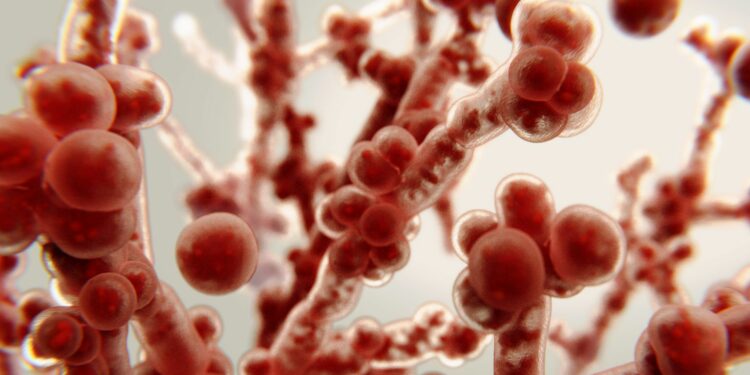Infectious diseases can have long-term effects. Most of them happen because of bloodborne pathogens. Have you ever heard of these microorganisms? If not, then this guide is for you. Let us start by talking about bloodborne pathogens.
BBPs refer to microscopic organisms found in the human blood. They can be transmitted easily through bodily fluids. These pathogens can cause illnesses, which include the human immunodeficiency virus (HIV), hepatitis B and C, and malaria. One individual can infect another when their bodily fluids come into contact with any cuts or ailments in the body. So bloodborne pathogens are present everywhere and may affect anyone. How do you protect yourself from BBPs? Let’s scroll below.
How to Protect Yourself from Bloodborne Pathogens?
Everyone must establish guidelines within organizations to prevent bloodborne pathogens. This means you must devise strategies to provide training, information, and equipment to everyone for further protection. The key strategies include:
Make Everyone Wear Personal Protective Equipment (PPE)
PPE kits are used by individuals to protect themselves from potential hazards. It can be worn in the workplace or other environments. It was one of the major elements of COVID-19. Make sure to use the proper PPE, including
● Gloves
● Goggles
● Face Shields
● Gowns
These are a must when you handle blood or any other bodily fluids. PPE is like a shield that blocks direct contact with any disease. It minimizes the chance of getting exposed to bloodborne pathogens.
Mandate Handwashing
Wash your hands with antibacterial soap and water thoroughly. This applies when you have contact with a potentially infected substance. It will reduce your risk of pathogen infection. You should also wash your hands after removing your hand gloves. This is because the glove removal may expose your hands to pathogens.
Handwashing many times a day is very important for preventing bloodborne pathogens. The right method of hand washing minimizes the transmission of disease through the hands.
Regulate Waste Management
Proper disposal of regulated waste is of the utmost importance. This includes contaminated items like gloves, gowns, and sharp objects. People must use specially designed containers for sharps and hazardous waste. This is an effective way to avoid accidental exposure and prevent the contamination of the environment. An important practice here is housekeeping. It refers to methods for cleaning and decontaminating infected surfaces. This may also involve the disposal of blood and body fluids.
Clean and Disinfect Environmental Surfaces
Regular cleaning and disinfection of the environmental surfaces can prevent bloodborne pathogens. People must apply EPA-approved disinfectants to kill the pathogens on the surfaces. This will reduce the risk of transmission through contact with the contaminated areas.

Make sure that the decontamination process involves using appropriate disinfecting solutions. For instance, you can clean the equipment by mixing one part bleach with ten parts water.
Ensure Exposure Incident and Reporting
In case of an exposure incident, quickly inform the relevant authorities or supervisors. Timely reporting is essential to ensure the proper evaluation and follow-up. It also includes prophylaxis if needed to reduce possible health risks.
You can also ensure thorough documentation of the exposure incident. It must include details like the date, time, circumstance of exposure, and location. The personnel involved in the incident should receive appropriate medical evaluation. You may also provide them with follow-up care if necessary.
Provide Healthcare Training
You must opt for training on bloodborne pathogens. This will include the transmission and prevention processes and proper protocols for handling potentially infectious materials. The training will make people aware of the safety measures and make them follow them.
However, healthcare training should not be limited to teaching about bloodborne pathogens. It may include infection control practices, hand hygiene techniques, and the use of personal protective equipment (PPEs).
Vaccine Utilization
There are several vaccines available worldwide. For example, the one for Hepatitis B. Vaccination reduces the chances of infection. Moreover, it avoids the potential long-term health complications linked with the Hepatitis B virus.
Vaccination reduces the chances of infection on an individual level. Try promoting its benefits through outreach programs and other educational courses. This will make it the most effective and cost-effective public health intervention available
Take Care of Any Open Wounds
Open wounds or cuts are major sources of bloodborne pathogens. You must clean the wound regularly. Squeeze some blood initially to get rid of the infected blood. Apply disinfectants daily to prevent the growth of these pathogens.
Final Thoughts
It may not be possible to get rid of bloodborne pathogens completely. Yet, you can prevent the pathogens from harming you or your loved ones.

All you need to do is follow the preventive measures to keep these BBPs in check. We have already discussed the different ways to protect individuals from bloodborne pathogens. Hence, make sure to follow these guidelines thoroughly and get ready to live a healthy and happy life.














